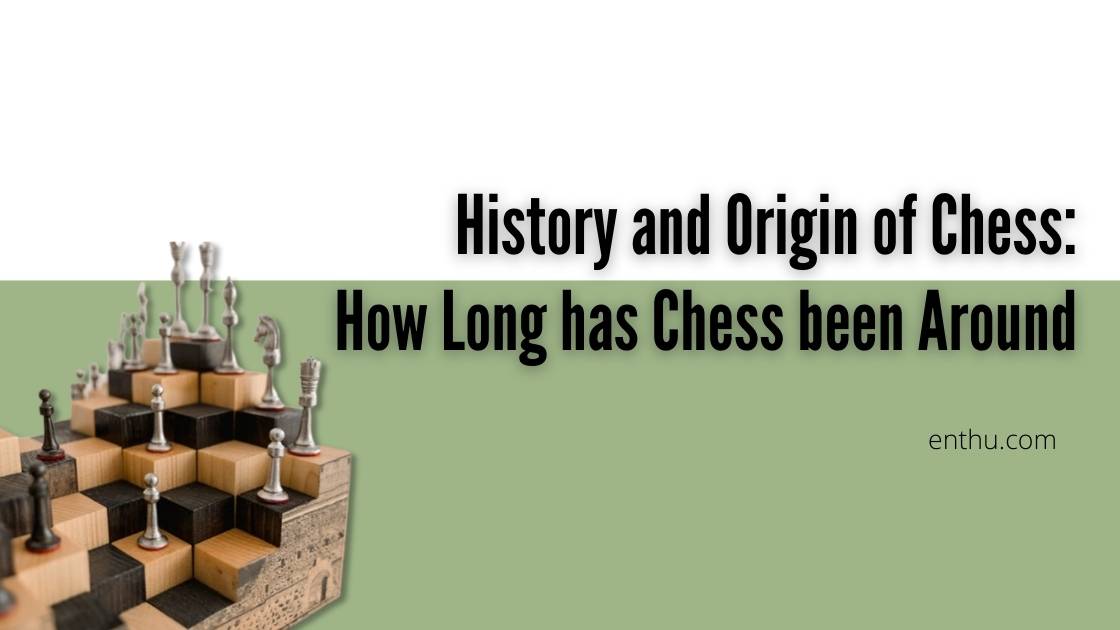Chess is as old as human urban civilization. When humans dwelled in cities and created classes of what we know as royals or nobles, they sought pleasurable pastimes.
As a result, chess came into existence.
However, modern-day chess wasn’t developed or invented in a day. It gloriously evolved over the course of time.
If you’re wondering how long chess has been around, you’ll be surprised to know that even the Harappan and Egyptian civilizations played board games resembling chess. As a matter of fact, the ancient Greeks also entertained themselves with similar gameboards.
Ancient History of Chess | How long chess has been around

The Harappan Gameboard and Gamesman
Indeed, the answer to how long has chess been around is debatable. However, according to a report of the Archaeological Survey of India, it originated in 26 BCE.
There are several findings dating from the 26th BCE that strongly counters the existing history of chess. There are gamesmen and pieces that resemble modern chess.
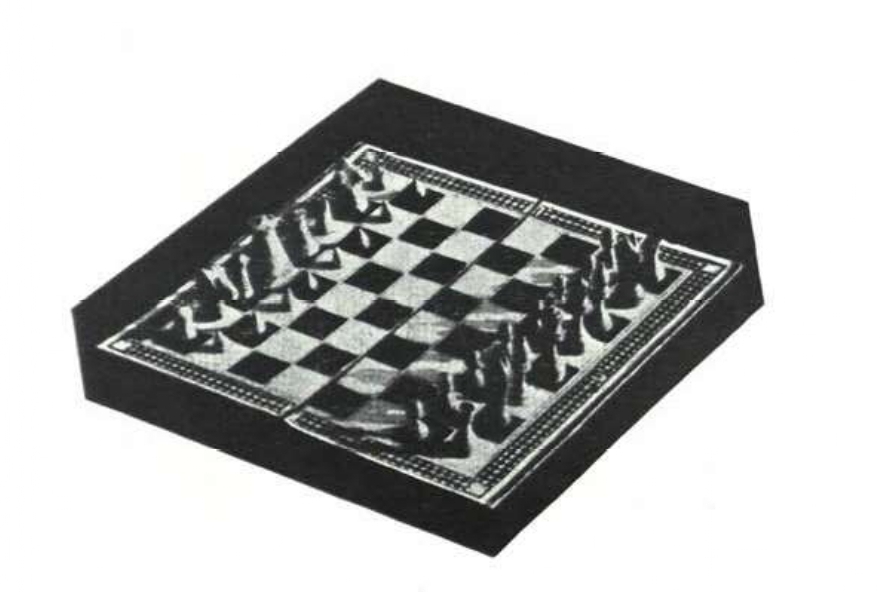
In this picture, on the left side are the gamesmen found during archaeological excavations in Lothal. On the right side are the modern gamesmen of chess.
Both of these are set together to understand the uncanny resemblance. These gamesmen prove that chess has been around since 26th BCE.
Although the pieces are unbelievably similar, the modern chessboard and the ancient gameboard are quite different.
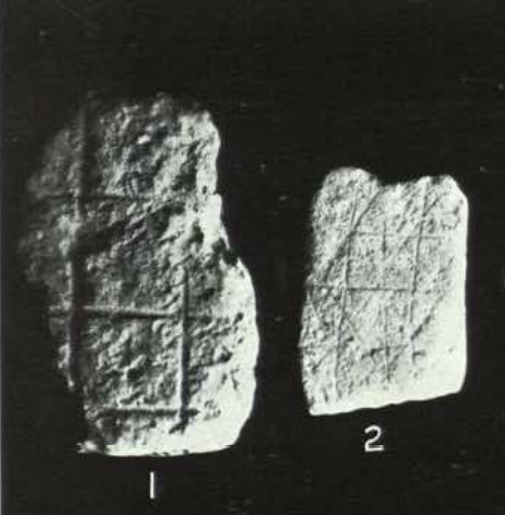
The ancient chessboard of Harappan civilization was a mere flat surface on rock or stone, as you can see in the picture. However, the grid squares bear similarities with modern boards.
Therefore, undoubtedly, the Lothal gamesmen and gameboards are the ancestors of modern-day chess.
The Egyptian Gameboard Senet
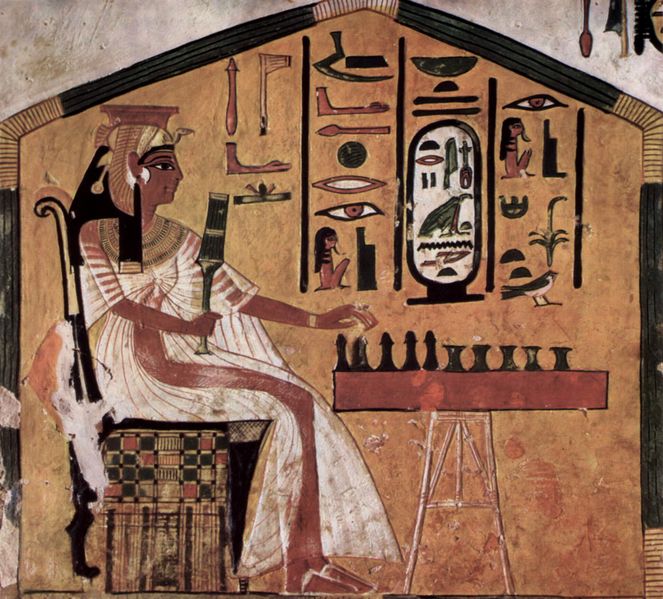
Look at the above picture and there’s another unbelievable answer to how long chess has been around.
In the above painting, you are looking at Queen Nefertari playing a chess-like game, Senet, in the 14th century BCE. It’s an ivory game box with 30 squares. And, the board and the pieces were made with similar materials–ivory and shell.
If you look at it attentively, the grid-squares and the pieces show striking resemblance with modern chess.
The Greek Gameboard Petteia
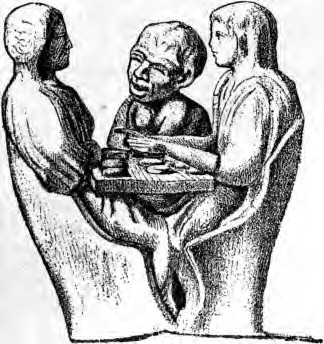
In the above, you’re looking at a Greek statuette group playing a chess-like game Petteia. It’s an ancient Greek game involving two players with equal numbers of pieces.
In this game, the players sit facing each other with the rectangular board in between them. The board is marked with a grid of squares, where the player advances their pieces and tries to capture the pieces with the opposite color.
As you can see, the board, pieces, and the manner of the game clearly say that Petteia is one of the ancestors of chess.
When was Chess Invented in India?
Chess in 26th BCE
As I have mentioned above, there is evidence that chess was invented in 26th BCE. The latest discovery proves that the Harappan civilization played chess in the 26th BCE.
Chess in 1st Century AD
When the Harappa and Mohenjodaro civilizations disappeared, the Aryans migrated to the banks of the Indus river (present-day north India and some parts of Pakistan) and settled down. They began to play chess.
One of the important texts prove the ancient origin of chess is Mahabharata. Although it was recorded in text form in the 1st century AD, it existed in oral form long before that. Therefore, chess was already a popular game amongst royals in the 1st century AD.
Many historians claim it was the Greeks-Alexander and his army-who introduced chess in India while invading in 326 BC.
But the archaeological findings in Lothal, the Harappan port town, say otherwise. Perhaps, chess was around in India decades centuries before the Greeks arrived.
Chess in 6th Century AD
In India, chess developed from various race games and dice games, such as Thayyam and Chaupar.
However, the maximum credit as the predecessor of chess goes to the board game named Chaturanga.

Unlike the previous board games, this one bore resemblance in terms of rules and power dynamics of the pieces.
The pieces had different powers, and victory solely depended on a single piece–the king. The names of the pieces are:
| Modern Pieces | Chaturanga Pieces | Meaning in English |
| King | Raja | King |
| Queen | Mantri/Senapati | Minister/Commander |
| Bishop | Gaja | Elephant |
| Knight | Ashva | Horse |
| Rook | Ratha | Chariot |
| Pawn | Padati/Bhata | Foot soldier |
As mentioned in Arthashastra, Chaturanga was already a popular game amongst the masses during the 4th century AD.
In spite of that, we consider the 6th AD as the birth era of chess. In that century, Chaturanga found its gameboard of 8✖8 grid squares called ashtapada.
Later, over the next centuries, ashtapada became the modern chess board, and Chaturanga became chess.
| Best Chess Apps | Best Chess Books |
| Best Chess Openings Against e4 | Worst Chess Openings |
| How to Always Win in Chess? | Tips to Improve in Chess |
| Middlegame Tips and Strategies | Endgame Tips and Strategies |
The Medieval History of Chess
Chess in Iran: Chatranj

According to a folklore, a royal physician named Barzuya brought chess to Iran during the reign of king Khosrow. It was around the 6th century AD.
Another folklore claims, Indian Ambassadors brought Chatranj to Persia during the reign of the same king, Khosrow I, King of Persia. The second claim is also supported by the illustration from the Persian manuscript “A treatise on chess”.
Historians consider the only dark skinned miniature as an Indian ambassador because of his unique skin color.
Despite the fact that Persians didn’t create modern chess, historians still give them much credit. They appropriated it according to their taste. Besides changing the names of the pieces, they also brought significant changes in the rules of chess.
Almost a thousand years ago, the world received the first chess manual from Iran. A Persian scholar, al-Adli ar-Rumi, wrote Kitab ash-shatranj.
Another scholar and theologian, AbulQasim ar-Raghib al-Isfahani, wrote a treatise on the ethics of chess.
Chess in Arabian Countries: Shatranj
During the last decades of the 9th century AD, chess spread across middle Asia within the Arab world. Muslim priests and rulers often tried to condemn chess, but it still gained popularity.
The common folks used clay pieces to play chess, which was affordable and accessible to everyone.
Then, the Persian chatrang changed into Arabian ‘shatranj’. The major difference between chatranj/shatranj and modern chess is the chessboard itself.

The above picture is a Persian miniature painting of Bayasanghori Shahname made in 1430. It depicts two chess players playing chess.
As you can see, unlike the miniature painting from the Persian “A Treatise of Chess”, The chess board is checkered.
Although, it’s not exactly black & white, it’s safe to say that Arabs invented the checkered chess board.
The names of the pieces retained their Persian names, except the knight.
| Modern Pieces | Chatranj/Shatranj Pieces | Meaning in English |
| King | Shah | King |
| Queen | Ferz | Counselor |
| Bishop | Persian- Pil
Arabian- Alfil |
Elephant |
| Knight | Persian- Asp
Arabian- Faras |
Horse |
| Rook | Rukh | Chariot |
| Pawn | Baidaq/Piyadah | Foot soldier |
The Rules of Shatranj:
- The Queen/Ferz was significantly weaker than the modern Queen piece. It could move only diagonally for one square.
- The Bishop/Pil also lacked power, unlike today’s Bishop. It could jump like the knight over other pieces but move only two squares at a time.
- Castling wasn’t invented at that time.
- Baidaq/pawn couldn’t move for two squares.
- The king, rook, and knight followed the same rules as today’s chess.
- Capturing the king was considered a checkmate. Again, capturing all the enemy player’s pieces was also another rule for checkmate in Shatranj.
| How to Play Queen’s Gambit? | How to Beat the London System? |
| How to Beat the Sicilian Defense? | Learn Dutch Defense |
| How to Play King’s Indian Defense? | All About Chess Ranking System |
Chess in the West
How did chess reach Europe?
There are several theories about how chess reached Europe. Some chess historians believe it was the Buddhist pilgrims and Silk road traders. They introduced Chinese chess or Shogi to the west.
Historians like Ricardo Calvo and Carmen Romeo claim otherwise. They believe Shatranj came through the Iberian Peninsula from Baghdad, as per the 13th century manuscript Libro de Los Juegos.
The widespread fame of chess is also credited to conquerors and invaders like the Vikings and the Normans. For instance, chess reached England when William, the conqueror, conquered England.
Chess in Spain
Since Spain was on the border between the Christian world and the Muslim world, it was the constant traveling destination in western Europe. Scholars, wanderers, physicians, and traders were going back and forth, visiting many public spheres.
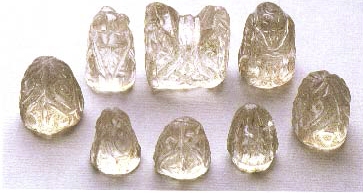
There are several pieces of evidence that establish the popularity of chess in Spain. One such piece of evidence is the 8 rock crystal pieces that were donated in 938 at Celanova (Galice).
Another evidence is the record of the 3 chess pieces at San Millan de la Cogolla (La Rioja), which were donated by king Sanche III of Navarra in 1033.
The evidence clearly says that Spain, if not solely, is definitely one of the major gateways through which chess entered Europe.
Chess in Sicily
Under Islamic rule, Sicily became the meeting center for Asia, Egypt, and Europe in the 9th century AD. It was one of the prominent cities of Southern Europe. Despite a Christian majority region, Sicily welcomed the culture of the East.
The archaeological findings near the Cathedral of Venafro include medieval chess pieces.
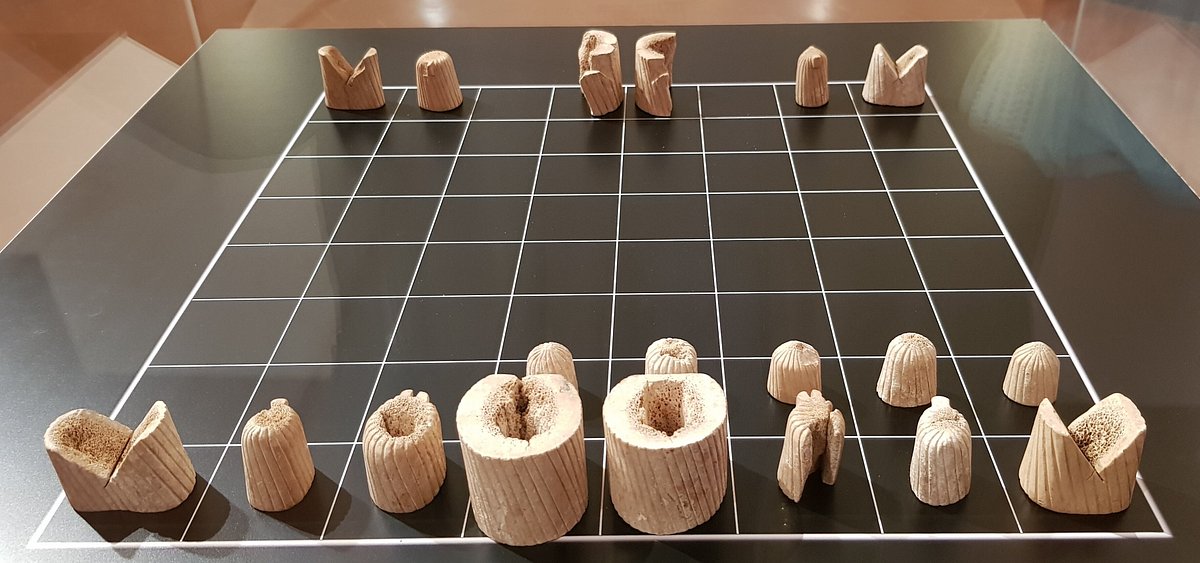
Therefore, it’s one of the possibilities how chess might have penetrated Europe through Sicily.
The Royals, the Church, and Chess
In the Disciplina Clericalis (Training School for the Clergy), Petrus Alfonsi included chess amongst the seven accomplishments of a knight as riding, boxing, hawking, swimming, archery, and verse writing.
In the beginning, it was the royals and the church people who initially played chess and widespread it across Europe and England.
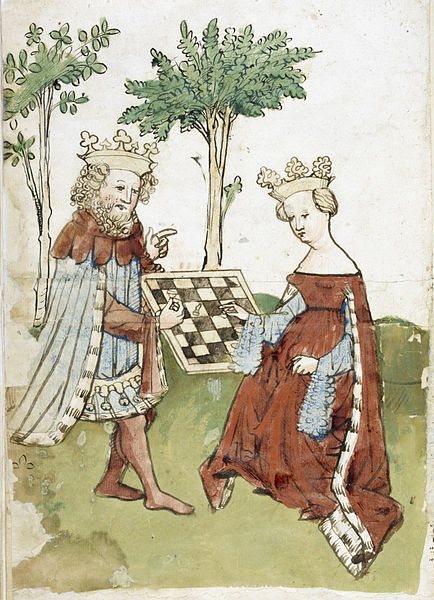
King Alfonso X of Lean and Castile commissioned Libro del Acedrex, as one of the most historically important medieval chess writings.
Queen Margaret of England had a chess set of green and red chess pieces. The set was made of jasper and crystal.
Kings Henry I, Henry II, Richard I, and John of England are the few royal English names who patronized chess. Also, Ivan IV (the Terrible) of Russia and Philip II of Spain influenced and popularized chess during medieval times.
Moreover, medieval bishops and monks richly contributed to chess literature, without which modern game wouldn’t be what it is. For instance, a Dominican monk from Lombardy used chess in his sermons. Later, it was compiled into a book.
It’s name is Liber de moribus hominum et officiis nobilium sive super ludo scacchorum. In English, it’s the Book of the Customs of Men and the Duties of Nobles or the Book of Chess.
The Rules of Medieval Chess in the West
- The rules of medieval western chess majorly remain the same as those of Shatranj.
- During the 12th century AD, westerns changed the names of the pieces according to their convenience. Ferz/counselor became Queen, alfil became Bishop, Baidaq/foot soldier became men at arms.
- The rule of En Passant was adapted from Italians.
- Queen can move both diagonally and straight, unlike the Ferz/counselor of Shatranj.
- The king can skip one box while moving to a safe play. This rule eventually would become castling.
| What is Castling? | What is a Draw? |
| What is a Stalemate? | What is en Passant? |
| How to Analyze Chess Games? | How to Become Grandmaster in Chess? |
The Birth of Modern Chess
Undoubtedly, the most exciting facts about modern chess are theories, fast-paced games, the powerful Queen, and chess tournaments.
The Beginning Of Theories
What makes modern chess different from medieval chess?
Many chess historians consider the middle ages as the golden era for chess because that was when chess was the most sought-after sport. It was not only the sport of royals but also the favorite indulgence of common people.
I think the chess theories separate modern chess from medieval chess. Earlier, even though it was the most popular sport, it was still a pastime. Nobody could pursue a career in chess.
However, in the modern era, chess is more than a sport. It’s a subject for an education worthy of studying.
Therefore, the beginning of modern chess can be considered with the first chess theory–Gottingen Manuscript. It’s a 33-pages Latin text published in 1471, currently preserved at the University of Göttingen.

Written by an unknown chess enthusiast, the first fifteen pages discuss twelve chess openings. The openings are:
- Damiano Defense (1.e4 e5 2.Nf3 f6)
- Philidor Defense (1.e4 e5 2.Nf3 d6)
- Giuoco Piano (1.e4 e5 2.Nf3 Nc6 3.Bc4 Bc5)
- Petrov Defense (1.e4 e5 2.Nf3 Nf6)
- Bishop’s Opening (1.e4 e5 2.Bc4)
- Ruy Lopez (1.e4 e5 2.Nf3 Nc6 3.Bb5 Bc5 Classical Defense)
- Ponziani Opening (1.e4 e5 2.Nf3 Nc6 3.c3)
- Philidor Defense.
- Queen’s Gambit Accepted (1.d4 d5 2.c4 dxc4)
- 1.d4 d5 2.Bf4 Bf5 (a form of the London System)
- Bird’s Opening (1.f4)
- English Opening (1.c4)
Page number 17 to 31 discuss thirty chess problems with diagrams and elaborated solutions.
On the whole, Gottingen Manuscript marked the onset of modern chess.
The Mad Queen
Around the last 15th century AD, people began to change the Queen’s move. Earlier it could move only two squares diagonally and straight.
Then, to make the game faster, people began to move the Queen as many squares as available, both diagonally and straight.
A Catalan poem called Scachs d’amor was the first document recording the Queen moving this way. Many called this piece the “mad queen” or “mad queen chess.”
This poem is also credited as the first document to record modern chess rules in writing.
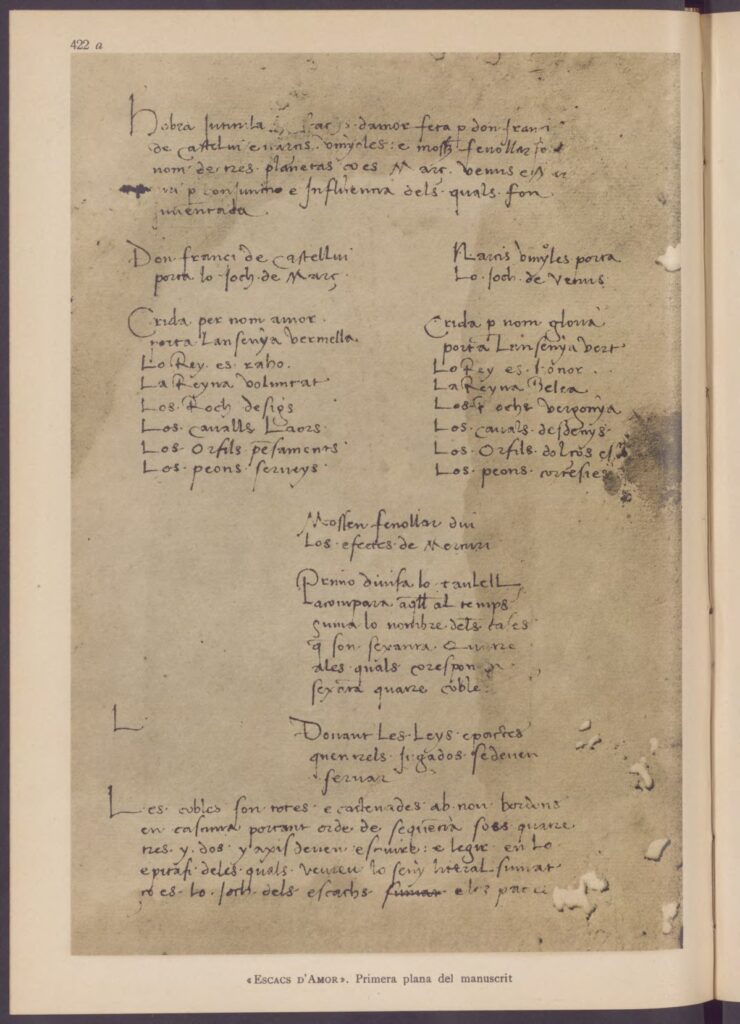
Overall, these modifications in chess rules changed the game completely. It made checkmate easier, the game faster, and the “pawn promotion” tactic more effective.
The Rise of Chess Tournaments
The First International Chess Tournament
Even though the era of modern chess began in 1475, the first tournament was held as late as 1841 in Leeds. It was followed by knockout tournaments in London and Amsterdam in 1849 and 1851, respectively.
At the end of the 1850s, chess tournaments were growing like mushroom–in Berlin, Paris, San Francisco, Birmingham, Manchester, New York, and Vienna.
Beginning in the 19th century, chess tournaments became a compulsory custom after the second world war.
The Formation of FIDE
Chess wasn’t included in the official Olympic games as it was challenging to pick professional chess players for the competition. Therefore, in the summer of 1924 in Paris, the Chess Olympiad took place separately and unofficially.
On the closing day, the Fédération Internationale des Échecs (FIDE) was formed. Although the FIDE has held Olympiads quite irregularly since 1950, it’s held every two years.
In 1950, the FIDE awarded the “Grandmaster” title for the first time. It officially recognized 27 legendary chess players as chess grandmasters.
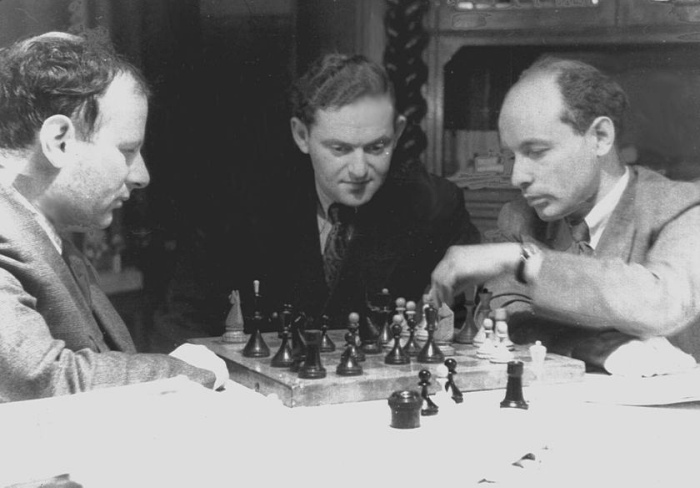
Since then, it’s the FIDE that standardizes the chess rules and other regulations related to international competitions.
FAQs
What is meant by ‘the endgame’, and what are some examples where this would occur?
The endgame is the last stage of the game. It typically refers to a position in which both players have fewer pieces remaining on the board, with no possibility of a draw. The common examples of the endgame are the king and pawn endgame, the rook and pawn endgame, and the king and two rooks endgame.
Who invented chess?
The earliest evidence dates back to the 26th century BCE to the Harappan civilization. Later, it developed to be modern chess. Therefore, there’s not a single person who’s credited as the inventor of chess.
How did the game of chess get its name?
There are many theories behind how chess got its name. One of the most popular theories is that westerners mispronounced “shah” a lot. Shah means ‘king’ in Persian. Gradually, with the course of time, the shah became ‘chess.’
In which country did chess originate? When did chess originate?
Even though many think it’s Persia where chess originated, it was the Indian subcontinent where chess was invented.
H.J.R Murray and many other chess historians consider chess originated in the 6th AD. However, such theories were only valid till 1962. The 1955 to 1962 report on Lothal findings provides enough evidence that chess was around even during the 26th century BCE. Therefore, chess originated in ancient India.
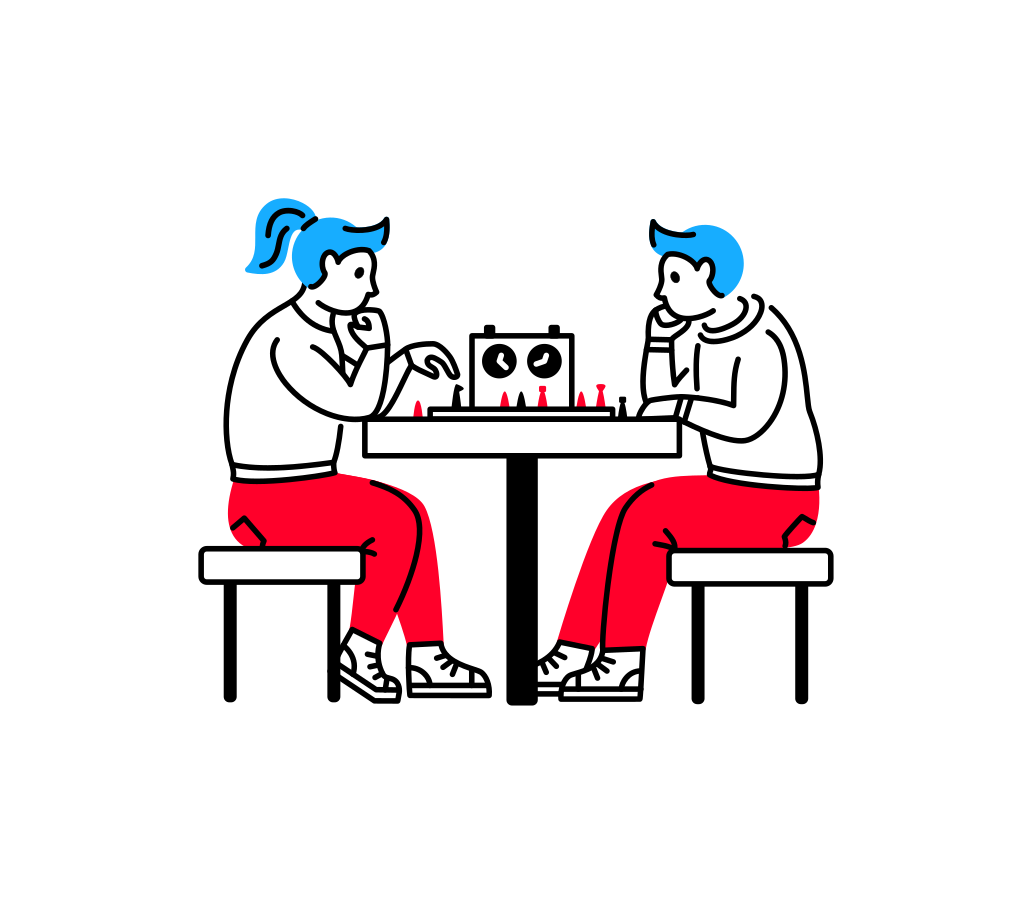
Learn Chess From Expert Teachers
Conclusion
As you have seen, chess is indeed as old as human civilization. It’s an immortal game as if humans walked out of the caves and invented chess.
The rules of ancient game-boards hardly resemble modern-day chess. However, the idea behind the game and the pieces bear similarities even to the 26th century BCE board game.
It’s almost next to impossible to summarize the glorious history of this royal game. Nonetheless, I have tried to provide a sneak-peek into its past.
I hope you enjoy the blog as much as I have enjoyed writing it.

